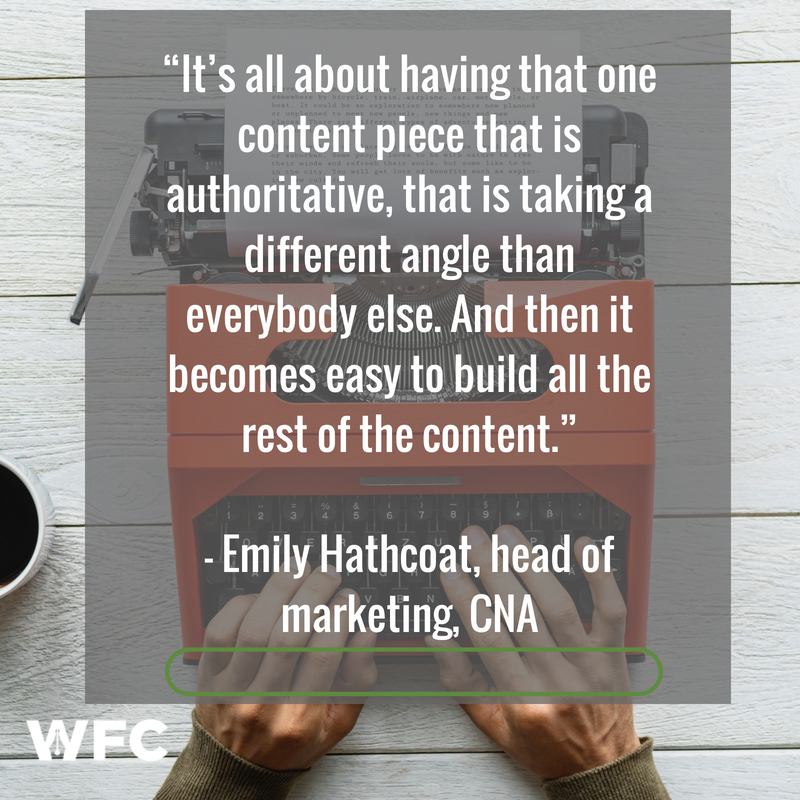In today’s era of bite-sized digital content, it would be easy to dismiss white papers and other long-form articles like VCRs and flip phones—outdated relics that have outlived their useful purpose.
After all, when one of the most prevalent content mediums—Twitter—says that anything longer than 280 characters is pushing the limits of people’s attention spans, why would anyone want to invest the time to write a 3,000-word white paper, especially considering that most of your audience will be reading it on a smartphone or tablet?
The same could be said for the other prevailing notions around how people consume content in 2018. Whether it’s the popularity of online video or people’s penchant to listen to podcasts while on the go, it may seem like an unpopular time to be a champion of using long-form written content as the focal point of your thought-leadership content strategy.
Yet, dismissing long-form written content like the traditional white paper might be shortsighted—especially for marketers in the financial services industry and other fields where the company’s primary form of differentiation is the expertise of its people.
On June 21, Wentworth Financial Communications attended an event convened by the Chicago chapter of the Financial Communications Society called “Dynamic Marketing in the Age of Intelligence,” featuring a panel of chief marketing officers from some of the biggest companies in finance and insurance, including CNA, BMO Global Asset Management, Northwestern Mutual, and Edward Jones.
Near the end of the audience Q&A section of the event, WFC Founder and CEO Scott Wentworth asked a question: As executives overseeing the content marketing operation for some of the largest firms in financial services—and as other content forms find success in the digital era—are you moving away from traditional white papers?

Emily Hathcoat, the head of marketing for insurance giant CNA, provided an interesting answer—one that might surprise advocates of the snackable-or-bust revolution in content marketing. Hathcoat said that long-form white papers and bite-sized digital content can—and should—co-exist in today’s marketing environment.
At CNA, Hathcoat said, the white paper is still the authoritative centerpiece of the company’s content marketing strategy. “In our case, no—the white paper is not dead,” she said.
She said that not only is the white paper still integral to CNA’s ability to showcase its thought leadership to differentiate itself from its competition, but that white papers are used as the launching pad for CNA’s other, more bite-sized and digitally focused content pieces. “It’s all about having that one content piece that is authoritative, that is taking a different angle than everybody else,” Hathcoat said. “And then it becomes easy to build all the rest of the content.”
In other words, financial marketers shouldn’t do away with the white paper but use it as the starting point for creating content for other digital marketing channels. Once you’ve established an authoritative, unique point of view in a white paper, you can break it out into smaller, more engaging content items—blogs, podcasts, videos, etc.—that you can distribute across a variety of channels.
Consider the white paper as the feature film, and the break-out, bite-sized pieces of digital content as the trailer for the movie—the audience’s gateway to discovering your firm’s comprehensive expertise on a given topic.
“The white paper for us just makes it easier,” Hathcoat said. “That’s where we’ve landed. It makes it more achievable to build out all of that other content. Specifically, on the tactics, our blog has performed the best out of anything. It gives us something we can promote through social [media]; it gives us something about which we can promote within our agency emails; we give them out to the brokers; they click on it, they share it. But it all comes primarily from that one bigger content asset.”
So next time you find yourself thinking that it might be time to retire white papers to the storage closet, next to your dusty VCR and flip phones, think again. White papers might actually be the perfect centerpiece to building a more holistic content marketing distribution strategy in the digital era.
For more insights into how to create a process for writing better white papers, click here.
About the Author

Frank Kalman is the chief operations officer at Wentworth Financial Communications. Frank and the team of writers and editors at WFC help professionals across the financial services industry build their brands by creating investment-grade white papers, bylined articles, newsletters, blogs, social media posts, and other forms of content marketing.
